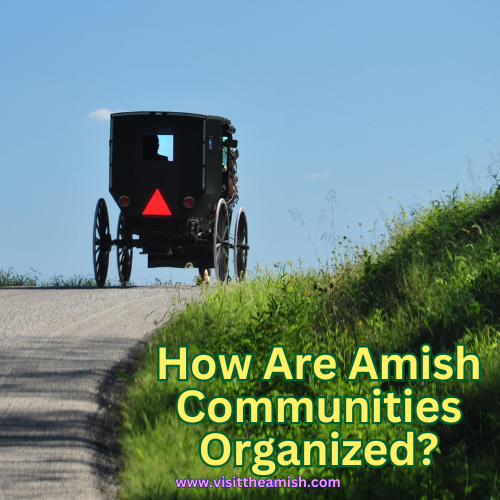The Structure of Amish Societies
Amish societies are fascinating in their unique structure and organization. The framework is categorized into three significant elements, namely affiliations, settlements, and church districts.
Affiliation
Let’s talk about affiliations first. Imagine a system where people who share the same rules of living, known as Ordnung, are grouped together. That’s what affiliation is all about in Amish society. This setup isn’t geographically bound, meaning individuals who belong to the same affiliation can reside in entirely different locations.
In other words, if you hear the term “in fellowship,” it is referring to Amish people who belong to a similar order and follow alike Ordnung. What makes things interesting is that while all Amish universally agree to specific doctrine elements like adult baptism and non-violence, the approach to technology, clothing style, and interpretation of spiritual issues vary considerably.
You can have a more conservative affiliation, like the Nebraska Amish, or a progressive one like the New Order Amish. From an outsider’s perspective, the differences might not be noticeable, but for the Amish, each affiliation’s uniqueness is distinctly apparent.
It’s also worth mentioning that Amish of different affiliations, despite their contrasting approaches towards things like technology, may choose to be in fellowship with each other. A good example is the camaraderie shared between the Andy Weaver Amish in Holmes County, Ohio, and the Lancaster County Amish.
Settlement
Moving on to settlements, this aspect quite literally involves geographical territories where groups of Amish settle down. A good example could be places like Arthur, Illinois, or Holmes County, Ohio.
A settlement could be home to one or more distinct affiliations. Imagine an area like Holmes County populated with different affiliations like the New Order, Old Order, Swartzentruber, and others. Similarly, a settlement might comprise a single church district or as many as several dozen.
Church District
Last, but by no means least, is the church district, the epicenter of Amish life. Usually, a district is made up of around 30 families, all adhering to the same Ordnung.
The Raber’s Almanac lists ministers from nearly 1800 church districts, displaying the broad scope of this facet of Amish society. Each district is usually led by a bishop accompanied by two or three ministers and a deacon, all having specific roles in the church. Interesting enough, some communities, in Lancaster County for instance, could have a single bishop leading two separate districts.
By attending church with members of the same district, Amish individuals form close-knit relationships with their fellow congregants. What’s fascinating is that even in the same settlement, districts might have slightly or significantly different Ordnungs, which makes one appreciate the diversity even within geographical proximity.
To sum up, the organization of Amish communities, with its affiliations, settlements and districts, creates a diverse yet harmonious society. It’s a model that has survived and evolved across time while retaining its core values, giving us a glimpse of a living and breathing cultural relic.

